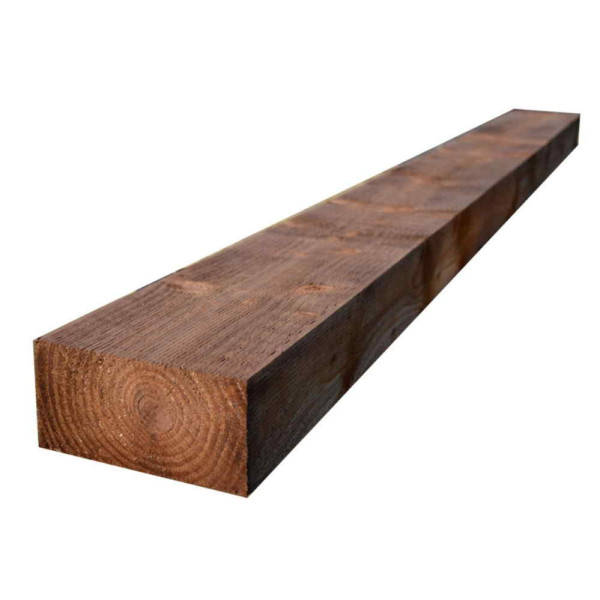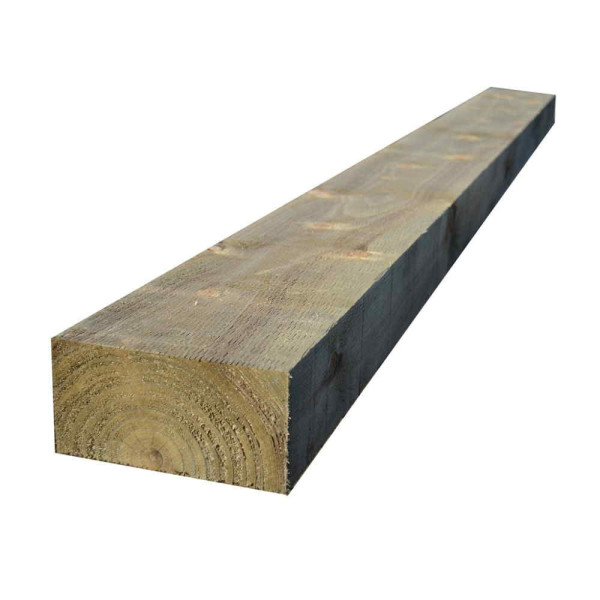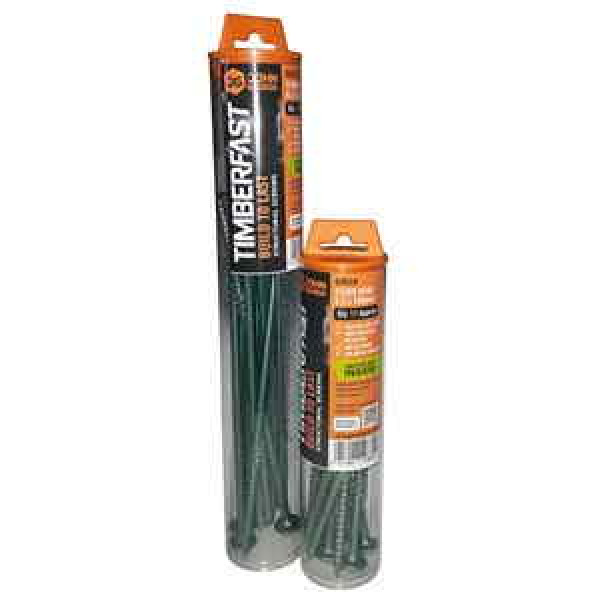Railway Sleepers
Buy Railway Sleepers for Raised Beds, Edging, Steps and Solid Garden Features
Looking for a landscaping material that’s strong, versatile and genuinely easy to work with? Railway sleepers are the go‑to choice for timeless raised beds, neat lawn edging, garden steps, planter walls, bench bases and low retaining features that look right from day one and keep doing the job for years. At East Coast Fencing, our timber sleepers are selected for outdoor use in British gardens and sized for straightforward, repeatable builds. Plan your layout, choose your finishes, add the right fixings and foundations, and build confidently—free delivery applies on orders £99+.
Why choose railway sleepers for your project?
Sleepers offer a rare combination of substance and simplicity. They’re hefty enough to sit flat and stay put, easy to cut and drill with standard DIY tools, and visually calm—clean lines, generous proportions and warm timber grain that pairs beautifully with planting. Whether you’re framing a smart kitchen‑garden bed, stepping a sloping plot or adding built‑in seating, sleepers read as “designed” rather than improvised, and they integrate naturally with surrounding timber elements such as cladding and fencing.
Raised beds and planters—depth, drainage and everyday usability
A classic sleeper bed delivers real soil depth for healthy roots, tidy edges for mowing and a top board that’s comfortable to sit on while you weed. Build single‑course beds for herbs and cut flowers or stack courses for deeper veg plots and statement planters. Join sleepers with exterior‑grade timber screws and angle brackets; pre‑drill near edges to avoid splitting and stagger vertical joints for strength. Line planters with a breathable membrane, and add drainage stone at the base where soils are heavy. For dependable hardware, browse our exterior‑rated screws, fixings & fasteners and choose bracketry from the wider ironmongery range to keep joints square and quiet over time.
Edging, steps and terracing—clean levels made simple
Sleepers make superb mowing strips and path borders. Set a single course flush with lawn to define edges that strimmers won’t scuff; use them to separate gravel from beds so mulch stays put and maintenance stays easy. On slopes, stack and step sleepers to form broad garden steps; keep treads consistent and comfortable, and anchor the first course securely so the run can’t creep. Where you’re terracing a gentle fall, a modest sleeper face retains soil tidily without the bulk of a full wall. For footings and secure anchoring, you’ll find reliable mixes in our cement products category.
Low retaining features—do it right
Sleepers excel for low, non‑structural retaining tasks like bedding edges and small level changes around terraces. Keep the backfill free‑draining, add a simple membrane to stop fines washing through joints, and avoid boxing water behind the timber. For taller or heavily loaded retaining walls, seek appropriate structural guidance; for everyday garden landscaping and planter work, well‑detailed sleeper courses provide long‑lived, tidy results.
Choosing sizes, finishes and a look that suits your plot
Think proportion first. In compact courtyards, a single course keeps things light and open; in larger gardens, two or three courses give visual weight and comfortable seating height. Pressure‑treated green mellows to a silvery grey for a relaxed, coastal feel; brown grounds heavier schemes beside clay brick and timber decking; deeper charcoals and soft blacks frame planting and modern paving. You can leave sleepers to weather naturally or unify tone with an exterior stain once treatment has settled—repeat the same finish across nearby timber for a cohesive composition.
Cutting, drilling and treating end grain
Use a sharp saw for clean cuts, support the length while cutting and wear eye protection. Pre‑drill for fixings close to edges, and seat screw heads flush rather than crushing fibres. Whenever you cut to length or notch a piece, treat the fresh end grain before fixing—simple steps that pay back in service life and appearance. If you’re adding top caps or bench slats, a light arris (eased edge) improves comfort and helps finishes last longer.
Integrate sleepers with the rest of your garden build
Sleepers pair naturally with fencing, screening and planting. A waist‑high planter behind a dining terrace makes a brilliant backrest for built‑in seating and doubles as a wind baffle. A low sleeper plinth beneath a barbecue or outdoor kitchen keeps appliances level and visually grounded. A stepped series of planters can lead the eye to a feature space—echo the vertical rhythm nearby with light, plant‑friendly screening from our trellis panels range, or keep the backdrop simple with calm privacy from fence panels that share the same timber language.
Ground preparation that keeps lines true
Good sleepers look best on a level, well‑compacted base. Remove organic matter and soft material, add a thin bed of compacted scalpings or sharp sand for levelling and confirm heights against a taut string before you fix anything. On wet ground, a shallow trench with a gravel bed improves drainage. If you’re pinning courses, drive anchors through pre‑drilled holes into firm sub‑base; where you set short uprights as hidden pegs, concrete them in with care and keep tops below the sleeper line for a clean finish.
Design ideas that work hard outdoors
Built‑in bench with planter backrest: form an L‑shaped planter two courses high and cap the front course with smooth sleeper tops for comfortable seating; repeat the stain across seat and planter for a unified piece of garden furniture. Stepped kitchen‑garden beds: use modest steps in height to create distinct zones for herbs, salads and perennials; a repeating module keeps the plot legible and charming from the kitchen window. Framing a feature tree: a simple sleeper rectangle around a small multi‑stem tree sets off bark and foliage while keeping mulch contained. Entrance statement: flank a path with short sleeper walls and top with pots or lanterns; the mass of timber frames the threshold without feeling bulky.
Blending sleepers with other timber elements
For a continuous look, repeat timber tones across sleepers, screening and posts. If you prefer contrast, choose a darker stain on the sleepers to ground the composition and a lighter tone on adjacent structures. When mixing materials, a slim metal accent—hinges on a storage lid, a strap on a corner—can look purposeful if you repeat the finish across components. Keep hardware choices consistent using our coordinated ironmongery.
Best‑practice fixings and discreet reinforcement
Exterior timber screws make for fast, serviceable assemblies; space fixings evenly for tidy presentation and share loads across the joint. For stacked courses, stagger vertical joints and tie layers together at intervals so courses behave as one. In long planters, add occasional cross‑ties to resist outward pressure from wet soil. Where lids or access panels are needed (compost bays, storage runs), use hinges and latches rated for outdoor use and keep fixings aligned—little visual disciplines make the difference between “installed” and “crafted”. You’ll find everything you need in our screws, fixings & fasteners selection.
Working with slopes, corners and transitions
On sloping plots, decide early whether to step your runs or follow the fall—stepping is usually cleaner for planters and walls; raking can suit long edges if the slope is gentle and consistent. At corners, keep faces flush and returns square; pre‑fit brackets and confirm reveals before final fixing. Where sleepers meet paving, leave a small expansion gap and run a neat bead of aggregate or chippings to manage water and keep dirt from sitting against timber.
Care, cleaning and seasonal checks
Timber rewards light‑touch care. Each spring, brush off winter debris, check fixings for tightness and top up finishes where needed. Avoid harsh jet‑washing at close range—it can force water into joints and lift fibres. Keep soil and mulch below the top of planter courses, and raise pots slightly on feet so water doesn’t sit trapped against surfaces. If you adjust a layout or trim a component, seal new cuts promptly before refitting.
Safety and handling—build comfortably, work cleanly
Sleepers are substantial; lift in pairs, support long lengths during cutting and wear eye protection and gloves. When setting any pegs or anchors in concrete, mark levels clearly and check plumb from two directions before the mix sets. Keep working areas tidy and edges protected to avoid scuffs on finished faces—small precautions that save rework.
Bringing it all together—what to add to basket
For most projects you’ll want the sleepers themselves, quality exterior screws, brackets where needed and a suitable footing material. If you’re anchoring posts or pegs, add a bagged mix from our cement products range; if you’re integrating lids, hinges and latches, match finishes across the ironmongery you choose. To tie the wider garden together, plan your backdrop and screening—light, plant‑friendly forms from trellis panels or the calm privacy of fence panels; for additional timber elements (caps, rails, battens), you’ll find what you need in timber.
A quick buyer’s checklist for smoother builds
- Confirm overall sizes and course heights before cutting—mock up a corner dry for proportion and comfort.
- Stagger joints on stacked courses and tie layers together at intervals for strength.
- Pre‑drill near edges, seat fixings flush and treat fresh cuts before installation.
- Keep drainage in mind: free‑draining backfill, breathable membranes and no trapped water behind timber.
Order railway sleepers today
From kitchen‑garden beds to confident terrace steps, sleepers give you the dependable structure and calm, natural look that makes outdoor spaces work better. Choose your lengths and finishes, add exterior‑grade fixings and reliable foundations, and build once with materials that belong in British gardens. Place your order with East Coast Fencing today and enjoy the convenience of free delivery on orders £99+.






